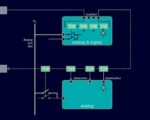You are currently viewing SemiWiki as a guest which gives you limited access to the site. To view blog comments and experience other SemiWiki features you must be a registered member. Registration is fast, simple, and absolutely free so please,
join our community today!
WP_Term Object
(
[term_id] => 159
[name] => Siemens EDA
[slug] => siemens-eda
[term_group] => 0
[term_taxonomy_id] => 159
[taxonomy] => category
[description] =>
[parent] => 157
[count] => 804
[filter] => raw
[cat_ID] => 159
[category_count] => 804
[category_description] =>
[cat_name] => Siemens EDA
[category_nicename] => siemens-eda
[category_parent] => 157
[is_post] =>
)

WP_Term Object
(
[term_id] => 159
[name] => Siemens EDA
[slug] => siemens-eda
[term_group] => 0
[term_taxonomy_id] => 159
[taxonomy] => category
[description] =>
[parent] => 157
[count] => 804
[filter] => raw
[cat_ID] => 159
[category_count] => 804
[category_description] =>
[cat_name] => Siemens EDA
[category_nicename] => siemens-eda
[category_parent] => 157
[is_post] =>
)
By Niranjan Sitapure
Artificial intelligence (AI) is reshaping industries worldwide. Consumer-grade AI solutions are getting significant attention in the media for their creativity, speed, and accessibility—from ChatGPT and Meta’s AI app to Gemini for image creation, Sora for video, Sona for music, and Perplexity for web… Read More
By Todd Burkholder and Per Viklund, Siemens EDA
The landscape of advanced IC packaging is rapidly evolving, driven by the imperative to support innovation on increasingly complex and high-capacity products. The broad industry trend toward heterogeneous integration of diverse die and chiplets into advanced semiconductor… Read More
Verification is always a top priority for any chip project. Re-spins result in lost time-to-market and significant cost overruns. Chip bugs that make it to the field present another level of lost revenue, lost brand confidence and potential costly litigation. If the design is part of the avionics or control for an aircraft, the… Read More
Jennifer, an OEM hardware designer, is planning a product around a microcontroller she thinks will meet her needs and wants to supply power from a 3V coin cell battery which she must connect though a boost controller. Jennifer searches a rough description of the part she needs, generating a long list of component manufacturers … Read More
The semiconductor industry is undergoing a transformative shift with the integration of AI into DRC workflows, as showcased in the Siemens EDA presentation at the 2025 TSMC OIP. Titled “AI-Driven DRC Productivity Optimization,” this initiative, led by Siemens EDA’s David Abercrombie alongside AMD’s… Read More
By Omar Elabd
As semiconductor designs move below 7 nm, parasitic effects—resistance, capacitance and inductance—become major threats to IC performance and reliability, often hiding where netlist reviews cannot reach. Design teams need advanced visualization tools like heat maps, layer-based analysis and direct layout… Read More
By Mark Tawfik
Overview: Protecting ICs from costly ESD and latch-up failures
Electrostatic discharge (ESD) events cost the semiconductor industry an estimated $8 billion annually in lost productivity, warranty claims and product failures [1].
Ensuring the robust protection of integrated circuits (ICs) against various… Read More
Digital design engineers have used DFT automation technologies like scan and ATPG for decades now, however, analog blocks embedded within SoCs have historically required that a test engineer write tests that require specialized expertise and that can take man-months to debug. Siemens has a long history in the DFT field, SPICE… Read More
The concept of built-in self-test for electronics has been around for a while. An article in Electronic Design from 1996 declared that, “built-in self-test (BIST) is nothing new.” The memory subsystem is a particularly large and complex part of any semiconductor design, and it’s one that can be particularly vexing to test. Design… Read More
By Ujjwal Negi – Siemens EDA
Multi-die architectures are redefining the limits of chip performance and scalability through the integration of multiple dies into a single package to deliver unprecedented computing power, flexibility, and efficiency. At the heart of this transformation is the Universal Chiplet Interconnect… Read More







![[white paper] Parasitic Analysis Figures](https://semiwiki.com/wp-content/uploads/2025/10/Fig1-net-level-visualization-150x127.jpg)


